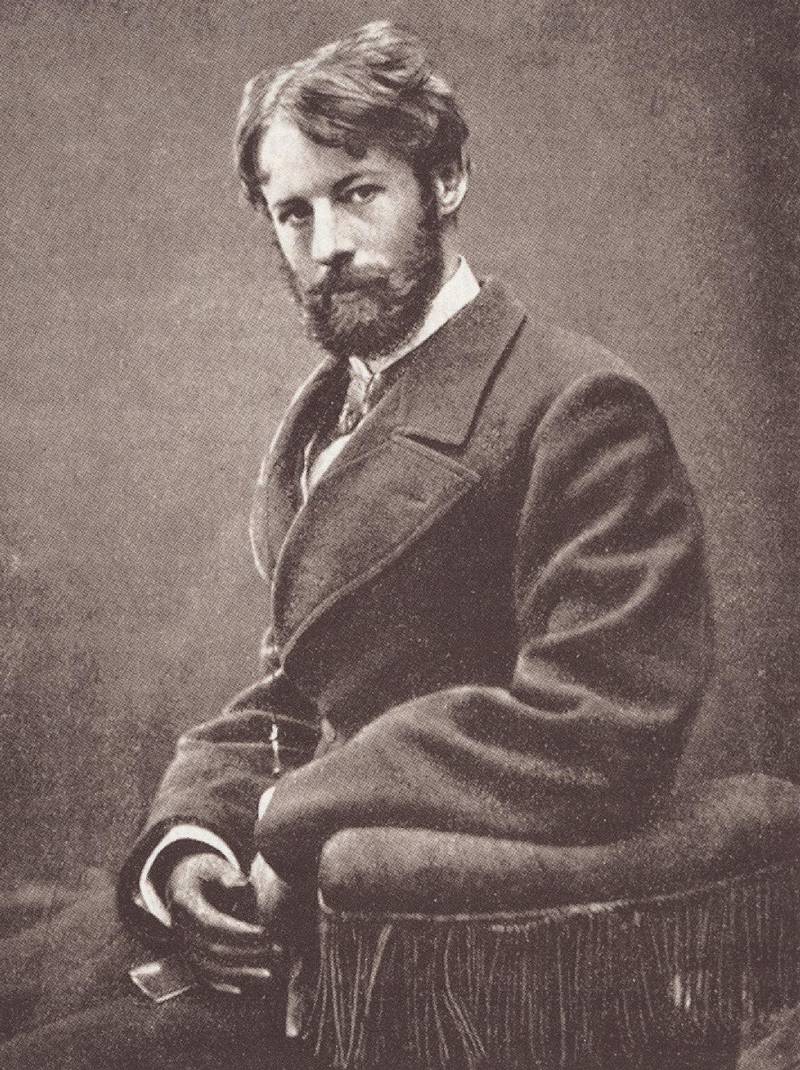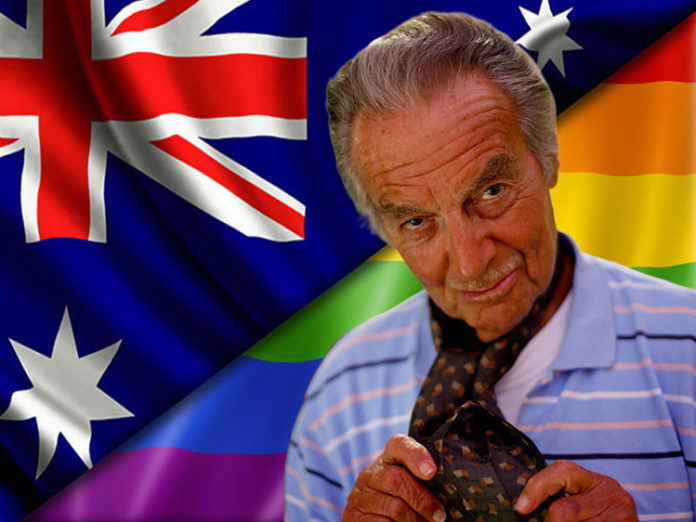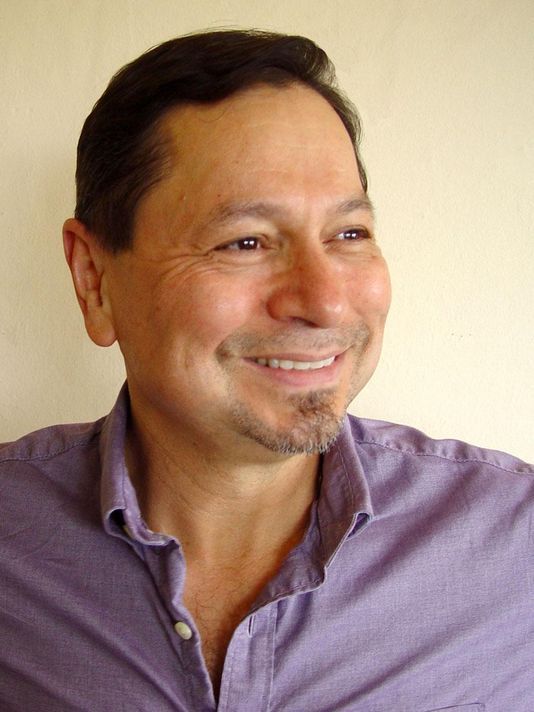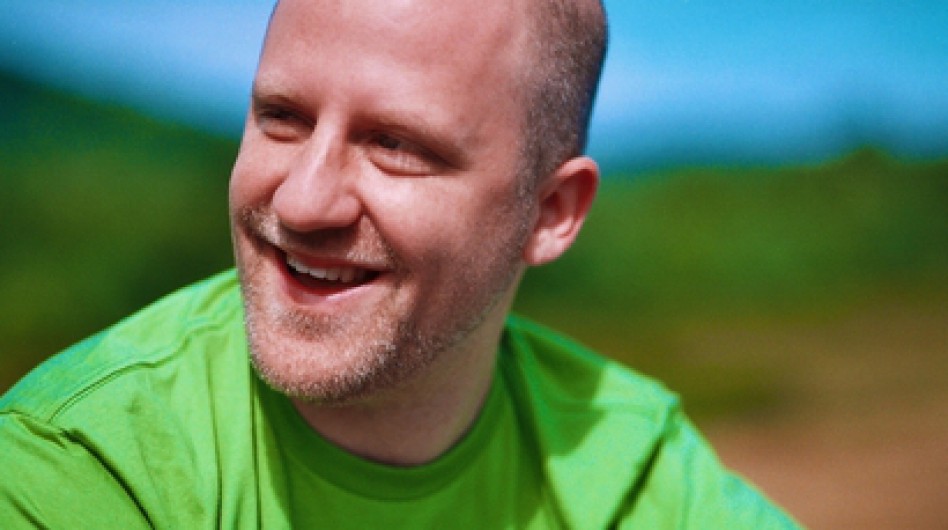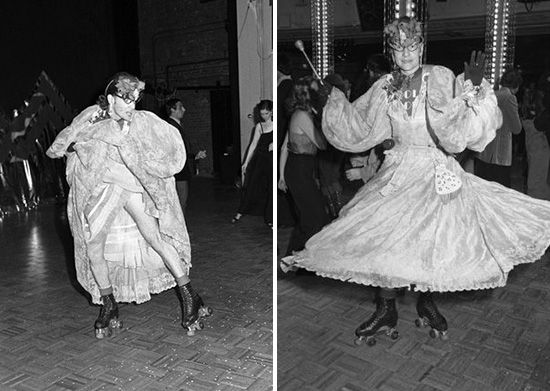September 16
WILHELM VON GLOEDEN, German photographer born in Wismar, Germany (d: 1931). At the turn of the 20th century photographs by von Gloeden were circulating all over Europe. He is mostly known for his pastoral nude studies of Sicilian boys, which usually featured props such as wreaths or amphorae suggesting a setting in the Greece or Italy of antiquity. Von Gloeden claimed to be minor German aristocrat from Mecklenburg.
Suffering from what was probably tuberculosis, he came to Taormina in Sicily in 1876. He was wealthy, and scrupulously shared the proceeds of his sales with his models, providing a considerable economic boost in this comparatively poor region of Italy, which might explain why the Gay aspects of his life and work were generally tolerated by the locals. The von Gloeden family insisted that his claim to The Barony von Gloeden was without warrant.
From a modern standpoint, his work is commendable due to his controlled use of lighting, as well as the often elegant poses of his male models. Innovative use of photographic filters and special body make-up contribute to the artistic perfection of his works. Famous in his own day, his work was subsequently eclipsed for close to a century, only to re-emerge in recent times as "the most important Gay visual artist of the pre–World War I era" according to Thomas Waugh.
The beautiful young men he took pictures of, usually semi-nude, were all from the Sicilian town of Taormina. In total the Baron took over 3,000 images, which after his death were left to one of his models, Pancrazio Buciuni, also known as Il Moro for his North African looks. Il Moro had been Von Gloeden's lover since the age of fourteen, when he had first joined the household of the Baron. In 1936, over 2,500 of the pictures were destroyed by Mussolini’s police under the allegation that they constituted pornography. Most of the surviving images therefore come from private collections, including the Leslie/Lohman Gay Art Foundation and Gallery in New York City.
For more, and images: http://www.artnet.com/artists/baron-wilhelm-von-gloeden/
STEVE OSTROW, born on this date (d: 2024), was initially known for his talents as a singer for the New York City Opera. But he went on to find even greater renown as the owner and manager of the unconventional world of The Continental Baths, which he opened in 1968, a gay bathhouse in the basement of The Ansonia Hotel in New York City.
Mr. Ostrow’s business plan in 1968 was to create a gay fantasia, a palace devoted to hedonism. The Ansonia, built at the turn of the century by a copper heir named William Earl Dodge Stokes, was perfect for his venture.
Occupying a full block on Broadway, from 73rd Street to 74th Street, The Ansonia is a florid wedding cake of a building, with cupolas, balconies and gargoyles. When it opened, there were Turkish baths and an enormous pool in the basement, billed as the world’s largest; seals in the lobby fountains; and, on the roof, an urban farm with goats, chickens and a bear.
Dissatisfied with contemporary venues, Ostrow sought to create a space that departed from the prevailing sleazy, unfriendly atmosphere. The Baths quickly gained popularity, with lines forming around the corner from the first night. With its opulent Gilded Age decor and Roman-style ambience, the Baths became more than just a haven for intimate encounters. It was a safe haven where, as Larry Kramer said, “...the Continental Baths changed things more than Stonewall did. They were clean, and you could talk to people, and Bette Midler sang to you.”
Ostrow transformed it into an offbeat music venue, installing a stage specifically designed for a DJ – claimed to be the first of its kind in the world. This innovation paved the way for such legendary DJs as Frankie Knuckles and Larry Levan to spin discs, establishing the Baths as a hub for groundbreaking music experiences.
Ostrow’s influence extended beyond the realm of music. The Continental Baths launched numerous artists who would go on to achieve great fame.
Among those to find an early footing on the Continental Baths' stage were in addition to Bette Midler and her accompanist, Barry Manilow, you might be entertained by Melissa Manchester, Ellen Greene, Labelle, The Manhattan Transfer, Jane Olivor, Melba Moore, Liz Torres, Wayland Flowers, Nell Carter and Peter Allen.
Midler, in particular, became synonymous with the Baths, debuting her song Friends at the venue and later recording the album Bathhouse Betty.
Live performances, open to the public, presented diverse talents and genres, though the gay crowd dwindled due to discomfort with the public presence; Ostrow agonized over this, cancelling live performances in 1974 and ultimately closing the Baths in 1976.
The basement of the Ansonia is now a parking garage. There are swaths of mosaic tile on the floor, ghostly artifacts among the cars and concrete.
Ostrow continued as a performer, performing in operas around the world for major companies, including the New York City Opera, the San Francisco Opera, the Stuttgart Opera and the Australian Opera. A passionate vocalist and teacher, he moved to Australia in the 1980s. As director of the Sydney Academy of Vocal Arts, he taught countless young Australian performers and continued working with students until he was nearly 90.
He appeared in films such as Superman Returns in 2006 and, on Australian TV, on A Country Practice, as well as commercials.
In the 1990, he founded the MAG (Mature Age Gay) group, which provided support and care for older men who had faced stigma and were grieving the loss of their partners after the AIDS epidemic.
MAG continues to meet regularly providing support for its members. His published books include an autobiographical account of his time at The Continental Baths.
On the back cover of his book, Saturday Night at the Baths, he wrote: “The Continental was a phenomenon that came out of a pre-AIDS world that we will probably never experience again. But more than being just a bathhouse and show-place, the Baths were a place where people came out of their closets and found out who they were.
“It was the first gay establishment to treat gay people as equals and not exploit them. It was instrumental in having the laws against homosexuality rescinded and gave birth along with Stonewall, to a whole generation where gay was in. Beyond that it ushered in an era of sexual liberation and alternative lifestyles that, to this day, has never been equalled.”
“I will also try to explore and share the confusion and frustrations I have felt as a bisexual, not understood by the gay or the straight world.”
In 2022, Ostrow was awarded the Order of Australia Medal for services to the Community, in the General Division of the Order of Australia. He died at his retirement home in Sydney. He is survived by his two children and grandchildren in the United States.
MICHAEL NAVA, is an attorney and Gay writer born on this date; Nava studied at Stanford University and later moved to Los Angeles, where he opened a private legal practice. With The Little Death Nava began his mystery series centered around the Latino Gay criminal defense attorney Henry Rios. The seven novels of the Rios series won five Lambda Literary Awards. With the last novel Rag and Bone, Nava announced the end of the series.
SANDI DUBOWSKI, American film producer and documentarian born; Founder of Films That Change the World, Director/Producer of Trembling Before G-d, Producer of A Jihad for Love, Co-Producer of Budrus, Outreach Director of The Good Pitch, lover, friend, Virgo Delight, global nomad, co-conspirator.
ROLLERENA FAIRY GODMOTHER came into being on the evening of Saturday, September 16, 1972 through and by a young man from Kentucky who put on a gown, a 1950s hat, and a straw basket and skated up and down Christopher Street in Greenwich Village, New York City. Over time, Rollerena added to her outfit: rhinestone glasses, costume jewelry, a small horn, and a magic wand to bless mortals became regular accessories to her character. She skated in gay neighborhoods, the Easter Parade, Gay Pride marches and in popular discos. The creator of Rollerena did not consider himself a drag queen; instead she became the character of a Fairy Godmother.
The boy who would come to be known as Rollerena was born in Kentucky in 1948. As a teenager, he frequently traveled to Louisville by bus or hitchhiking, earned him the name “the bluegrass belle of the three counties.” At the age of 18, he registered for the draft and graduated from high school in the following spring. He served in the artillery infantry in Vietnam and returned to the States in September 1969. Upon arriving in New York City, he worked on Wall Street and even spent New Year’s Eve of 1969 in Times Square.
He started roller skating to work in 1970 and was often seen practicing his skating on 79th Street and Fifth Avenue. By this time, he was given the nickname “Rollin’ Skeets” and was known to wear a visor, an umbrella on his head, a backpack and a little horn at his waist to alert foot traffic. At the 1971 Gay Pride Parade, he skated around as "Rollin’ Skeets". He went by this name for two years, until Rollerena was born.
After stepping foot into an antique store on Christopher Street, Rollerena emerged in her classic costume and began skating around the Village. She then entered a bar and “the whole place went absolutely wild!” It was said that “a crowd gathered like they were awaiting Glinda landing in Oz.” She then officially debuted in the 1973 Easter Parade as “Roller Arena the Fairy Godmother” (later shortened to “Rollerena”). Although her skating was limited to well-heeled neighborhoods, gay spots and chic haunts like Studio 54, she became ever popular. As Rollerena became more well-known within and beyond her community, people began to request her presence at various events. She had a post office box, business representatives, disco events, postcards, and was featured in many newspaper articles, TV shows and radio talk programs.
Throughout her history, she collected thirty 1950s hats, costume jewelry earrings, and fifteen pairs of rhinestone glasses. Various newspapers gave different spellings to the Fairy Godmother and these spellings are used in this finding aid as they appear in the articles. They include: “Rollerina,” “Roller Rena,” “Rolla-Reena,” “Rollerarena,” and “Roll-Arena.”
Subscribe to Gay Wisdom
Would you like to have Today in Gay History (aka Gay Wisdom) sent to you daily?

